The Golding’s Voyage
Voyage Overview:
Beginning in April 2024, The Goldings and their crew are sailing from New Zealand to Fiji, Vanuatu, Torres, Darwin, East Timor Island in the Flores Seas, Bali, Christmas Island, Cocos Keeling, Mauritius, Reunion, Port Elizabeth, Cape Town, Walvis Bay, St Helena, Recife, The Caribbean, Bermuda, The Azores, The Canaries, Gibraltar, and will finally return to Grande Motte in early Summer 2025. Their journey will contribute to scientific advancement as they actively engage in Science-at-Sea and Citizen Science activities, showcasing their commitment to marine science research as part of SeaKeepers’ DISCOVERY Yacht Programme.
Mike Golding OBE says:
“Our passage across the Pacific and Indian Oceans provides a fantastic opportunity to support the work of many scientific researchers involved in ocean conservation. Through our partnership with SeaKeepers, we are delighted to provide practical support - collecting environmental DNA, water samples for measuring microplastics, tracking the seabed and hosting scientists onboard Traverse - enabling access to remote ocean areas to observe the behaviours and habitats of incredible sea mammals.”


At-Sea and Citizen Science Initiatives
As ambassadors for SeaKeepers’ DISCOVERY Yacht Program, the Golding’s are participating in various Scientist-Led
Expeditions and Citizen Science initiatives to support the research of:
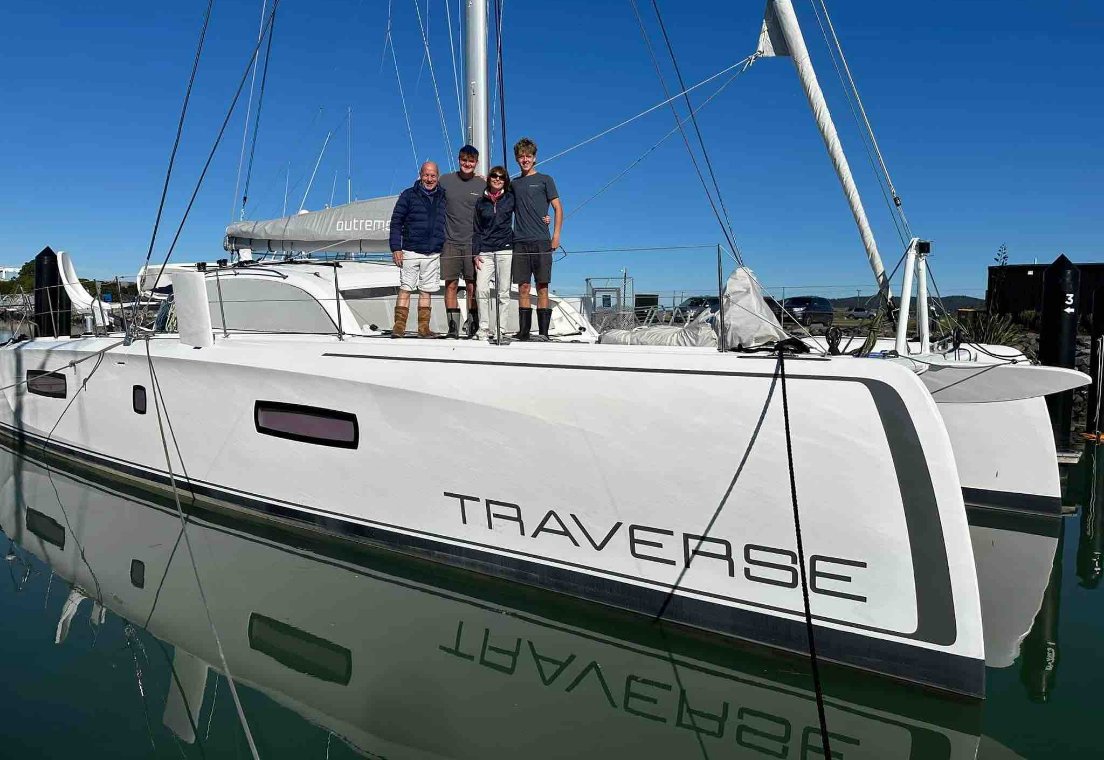
While travelling across the globe through coastal and oceanic regions, Traverse will record depth measurements to contribute to the Nippon Foundation- GEBCO Seabed 2030 Project, a formally endorsed Decade Action project of the UN Ocean Decade. This collaborative project encourages the global vessel network to become citizen scientists, taking bathymetric readings as they travel from one location to another, with the aim of mapping the entire ocean floor by 2030. As Traverse is journeying through remote regions that are infrequently travelled, she will contribute crucial data to this project, improving our understanding of the seafloor and the bathymetric features that are present in largely understudied regions.
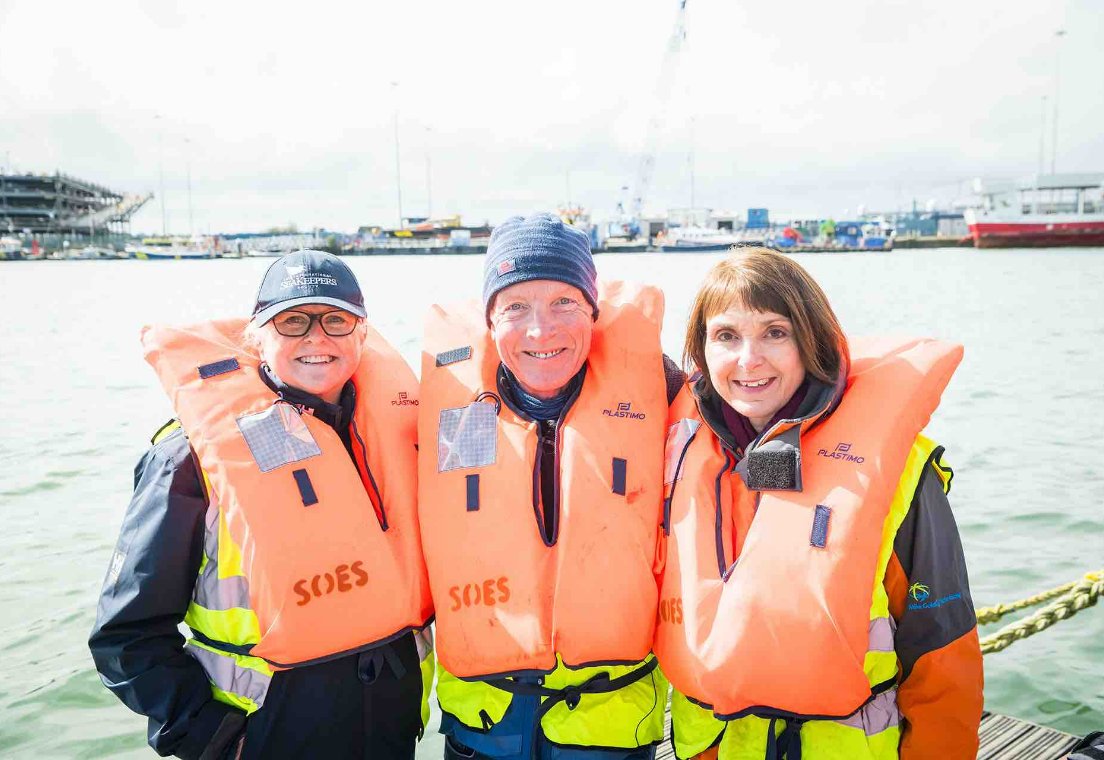
In late Spring as part of their expedition planning, Mike and Andrea Golding attended a session at the National Oceanography Centre to train in sampling protocols for the Microplastic Sampling Project. Here, they were introduced to the research group, strategised about their upcoming expedition, and learnt more about the project itself, which aims to tackle pivotal questions surrounding microplastics in the ocean, addressing their fate, distribution and ecological impacts.
As they journey across the Indian Ocean, The Goldings and their crew will use a neuston net to collect water samples that the research team can analyse in their UK labs to learn more about plastic pollution in this remote location. Their unique route provides the NOC team with the opportunity to sample more distant areas that they would not have the capacity to without Traverse and SeaKeepers’ support.

Beginning her journey in New Zealand, Traverse travelled up to Fiji to explore the Pacific Islands. During this voyage, scientist Rob McFarlane, Project Manta Fiji, joined The Goldings and their crew to investigate a largely understudied group of oceanic manta rays that live near the Yasawa Islands. By conducting drone surveys of an elusive oceanic manta population, these researchers had the opportunity to learn more about this endangered species in an area that was previously difficult to access. They recorded footage at three different locations in an attempt to observe manta movements, however, no footage successfully captured these breathtaking individuals. Although no mantas were observed, this footage still provides valuable data to the scientists, informing them of manta ray distributions and habitat use in the region. Traverse provided the scientists with a platform to enhance their current research by expanding their study reach to geographic locations that would have been inaccessible otherwise.

Prior to commencing their expedition, The Goldings and their crew attended the Citizens of the Sea workshop to learn more about environmental DNA (eDNA) sampling methods using SeaKeepers’ funded TorpeDNA. Citizens of the Sea has developed new technologies to enable offshore yachts to collect eDNA at fast cruising speeds. Their project aims to discover more about New Zealand’s marine biodiversity by using cutting-edge genomic technologies to analyse the cells that species lose naturally as they travel through the ocean.
By collecting multiple samples a day between New Zealand and Fiji, The Goldings and their crew contributed to vital research that will help to address some of the ocean’s most urgent questions, enhancing our understanding of Pacific Ocean ecosystems and global biodiversity.

While travelling through the international waters of the Indian Ocean between Cocos Keeling and Mauritius, the Golding’s towed a Neuston Net behind DY Traverse, collecting water samples containing microplastics for the NOC Microplastics Project. The ocean contains large quantities of microplastics that move across the globe via both surface and deep water currents, however, little is known about their long-term residency and impacts in the marine environment. There is a critical need to understand the extent and characteristics of this contamination, down to the smallest sizes possible, because the smaller the particle, the higher the risk to ecosystems. By contributing valuable microplastic samples to the NOC Microplastics Project, the Goldings are supporting crucial research investigating the fate, distribution and ecological effects of microplastics in the marine environment.
On their first Neuston Net tow roughly 1500 miles away from land, the Goldings were surprised to see visible plastic chunks in their collected water sample, when the ocean itself appeared crystal clear. As microplastics are defined as any plastic fragment less than 5 mm in length, they are often invisible to the naked eye, however, their ecological impact is not. The Goldings bottled and labelled their samples, which contained lots of multicoloured debris, ready to ship them back to NOC, Southampton, for detailed analysis by the research team. Both the Goldings and SeaKeepers look forward to hearing the findings from the NOC Microplastic Project, which will increase global understanding of microplastic pollution in the modern-day oceans.
To quote Mike Golding, “Feels good to be a small cog in this important research”.

ORCA OceanWatchers is a citizen science programme monitoring whales and dolphins around the world to help gather data and drive conservation efforts.
Aboard Traverse, we are aiming to aid their efforts by carrying out our own visual surveys through the ORCA OceanWatchers mobile app.
Before leaving Cape Town, we had a great insight into whale and dolphin identification and biology through online tutorials by ORCA. We also learnt the basics on how to use the app and conduct the surveys.
Whilst at sea, we have been running surveys using the app which takes us through an easy step by step process of setting up the survey. First, we input data on the conditions including, sea state, precipitation and glare. We update this every thirty minutes during the survey or sooner if conditions change.
We then keep watch and hope to catch sight of a whale or dolphin!
If we are lucky enough to spot something we record information on their behaviour, group size, species and other specifics when possible. To identify the species there is a useful ID guide included in the app.
So far on our Atlantic trip from Cape Town to Ascension Island, we have seen a pod of more than thirty dolphins off St Helena and a humpback whale as we were leaving Cape Town.
We also saw sea lions relaxing and playing in the water all the way from Cape Town to Walvis Bay in Namibia, and are frequently visited by flying fish landing on the boat as they catch the wind with their fanned, wing-like fins. Upon arriving in Ascension island, we have been greeted by ten large green turtles which are commonly seen on and off the island during the nesting season from December to July.
We look forward to continuing these surveys on our next leg to Brazil and beyond.
Lily Burnet, DISCOVERY Yacht Traverse Crew
On our passage from Fernando De Nornoha to Natal, we had an amazing opportunity to partner with Projeto Golfinho Rotador Noronha, Noronha Spinner Dolphin Project.
We met Rafael Pinheiro (Rafa), Marine Biologist at the Spinner Dolphin Project, on Fernando de Noronha, an island archipelago two days sailing from Recife, mainland Brazil. Rafa and the Spinner Dolphin Project team work hard to protect Spinner dolphin populations around the island through constant data collection and monitoring. Fernando de Noronha has one of the largest congregations of the species in the world, making it an important site for protection and research.
As part of the project, Rafa and the team run a surf and sailing school for local children to help promote a love and appreciation of the sea.
Rafa joined us for the 24hr passage from Noronha to Natal, mainland Brazil, in order to collect data on dolphin activity in the open sea. Whilst sailing, we kept watch and saw a pod of around 15 Spotted dolphins in the evening and another pod of around 15 Clymene dolphins early in the morning.
It was a great opportunity for us to learn more about dolphins, as well as facilitating data collection for the Noronha Spinner Dolphin Project.
Lily Burnet, DISCOVERY Yacht Traverse Crew
Community Engagement
As ambassadors for SeaKeepers DISCOVERY Yacht Program, the Goldings are sharing their experiences and meeting with local communities, inspiring the yachting community to support marine research, conservation and education.
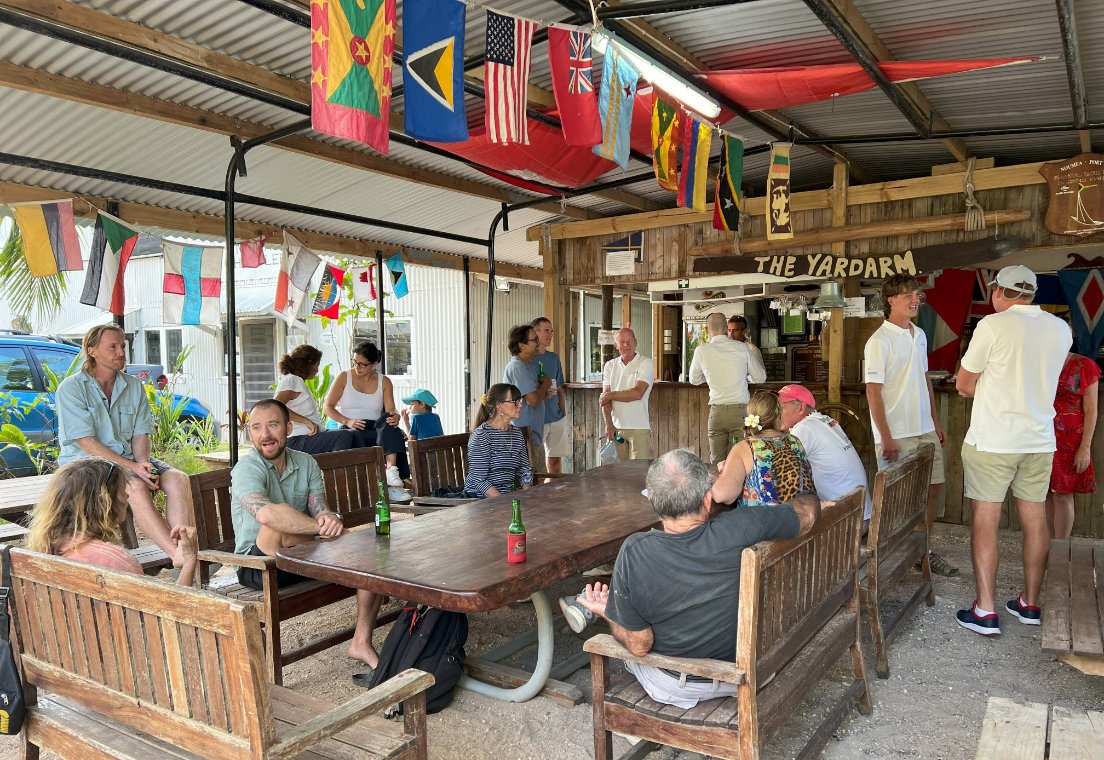
Traverse arrived in Port Vila, Vanuatu on May 27th, and was welcomed by the British High Commissioner, H.E. Nicolette Brent, and Director of SeaKeepers South Pacific, Melissa White. Here, Mike attended a welcome event at the Vanuatu Yacht Club, where he shared stories of his past racing career, and his unique experiences as a SeaKeepers DISCOVERY Yacht. While in the area, The Golding's continued their Citizen Science work by reporting wildlife sightings through multiple platforms that will help the understanding of species in Vanuatu. Through speaking with the local yachting community, Mike Golding OBE, alongside SeaKeepers’ Melissa White, and Dr Christina Shaw, CEO of Vanuatu Environmental Science Society, inspired the sailors to become better ocean stewards and make positive changes to more sustainably use the local marine environment, protecting their unique species and fragile habitats for future generations.
The 4.50am call to prayer has started on land, and on the ferry moored behind us! It is a tough reality of the Islamic faith that prayer, 5 times a day, starts this early.
Our experience within this tight knit Bajau community has been incredible… Initially greeted by the local fisherman, we were then welcomed into the home of octopus ‘data collector’, Sunarti, who with her sister and other village women, prepared an amazing spread for us on Monday evening. Freshly caught octopus satay and red snapper were cooked, outside in the dark, on an open fire between the stilted wood and bamboo family homes. Inside huge bowls of steamed rice, rice cakes, locally grown sea spinach, soy/chilli dip and snake fruits were spread across the large floor mat. With the fish served, we squatted around, as best we could - our long-legged crew all facing a challenge! One of the younger data collectors giggled at the chance of a photo with 3 Western boys and everyone excitedly gathered for a group shot at the end of the meal.
An hour later and we were sat on another mat, in another village house for a meeting with the Pelita - Brotherhood of Fishermen, and a plan was made for the following day.
Tuesday - as the full moon set in the west and the sun rose in the east, the crater of the Gunung Rinjani volcano became visible. Shortly after, the put-putting noise of an engine and smell of fuel wafted across the water, and our lift arrived. Ten smiley faces peered out from beneath the roof of a double outrigger. A swift transfer across and we were off to the mangrove lagoon. Like a maze, we weaved our way through to the centre and the quiet ‘meeting place’ of the local fisherman. The occasional noise of a nesting crane broke the silence before we slipped into the water to snorkel for sea grapes - a local delicacy that once plucked, washed, and served, look like green caviar…
An hour passed quickly, and back on-board warm corn on the cob was served. It was now time to move on and take a trip ashore to the top of the peak.
It was hard to keep a footing on the dry, gravelly slope but with care we made it - still wet in our snorkelling attire! Looking down from the top revealed an amazing view of the mangrove swamps, the reefs and the many islands. The sea glistened in the sun, revealing a multitude of blues - turquoise to deep. Another photo opportunity and a careful scramble down - pulling at dry tufts of grass to stop an imminent fall. Safely back on board, we enjoyed cool coconut milk - the top expertly sliced off by Mahari, the lead fisherman, with his machete. Then silver bowls of fresh pineapple were passed back and forth along the 30ft outrigger, and we were off again to snorkel for octopus.
The octopus fisherman led the way, swimming so fast against the choppy waves, it was difficult to keep up, and diving so deep as they dangled their fake octopus lure beneath them. It is hard to believe these young men fish this way daily. Swimming and snorkelling alone, they tow their small outrigger behind while dangling their lure below, then diving deep to catch their prey by hand. Time passed but sadly with all of us splashing behind, no octopus emerged.
It was a bad day for business.
Maintaining the health of these reefs and the stock levels of octopus is all part of the conservation work initiated by NGO JARI and the Pelita. It was clear to see a strong relationship of trust and respect has developed. With the ‘data collectors’ tallying the daily catch - recording numbers, locations, and size of the octopus, the 140 fishermen can manage the reefs they fish and identify those to temporarily ‘fallow’. Simple processes, together with knowledge and understanding has brought other benefits too - jobs for women within the marine community, appointment of enthusiastic seabed ambassadors, understanding of the impact of rubbish on the health of the sea and interestingly a community ‘savings’ system to assist with managing finances. The work of JARI in this community is inspiring. It is truly humbling to see the approach that Hani, her husband Boen and their small team has taken to live and work alongside these Bajau people in the most gentle and respectful way.
After another wonderful, traditional meal on a remote island, we crossed to Pulau Nusa and went ashore to plant a tree - a final gesture and acknowledgment of the importance of maintaining the health and well-being of our precious ecosystems.

On December 5th, 2024, Mike and Andrea Golding, along with the crew of DY TRAVERSE, set sail from Richards Bay to Port Elizabeth, taking advantage of a brief good weather window. On arrival in Port Elizabeth, they were welcomed by the Algoa Yacht Club, a virtual yacht club, and the Ocean Sailing Association of Southern Africa (OSASA), a voluntary organization that collaborates with the government to support international yachts navigating the coast. There DY TRAVERSE filed a "flight plan" with OSASA and the relevant authorities. This is a precautionary measure should a yacht be caught out in adverse conditions or fail to arrive as scheduled.
After mooring in the heart of the Port Elizabeth fishing port, the crew prepared for the final leg of their journey to Cape Town, which included a passage through Hout Baai. A significant milestone was achieved in the early hours of December 10th, when TRAVERSE rounded the iconic Cape of Good Hope, marking their entry into the South Atlantic Ocean.
While the crew had encountered only a few distant whale sightings during their transit of the Pacific and Indian Oceans, the final 20-mile stretch from Hout Baai to Cape Town was a remarkable contrast. For over two hours, TRAVERSE was surrounded by a pod of more than 30 whales, creating an unforgettable experience for all onboard.

Once in Cape Town, DY TRAVERSE berthed at the V&A Marina beneath the stunning backdrop of Table Mountain. To honour the expedition, the Royal Cape Yacht Club hosted an exclusive event on the 18th of December, attended by club members, competitors from the Oyster World Rally and ARC, and SeaKeepers members.
Vice Commodore Dave Garrard warmly welcomed guests, followed by Chairman Jay Wade’s presentation on SeaKeepers’ mission and the DISCOVERY Yacht program. The highlight of the evening was an inspirational talk by Mike Golding OBE, accompanied by a film showcasing the voyage, the research conducted, and the remarkable locations visited.
This occasion marked SeaKeepers’ inaugural presence in South Africa and served as an opportunity to announce the Royal Cape Yacht Club’s future commitment to supporting ocean research, conservation, and education through the SeaKeepers DISCOVERY Yacht programme in 2025/26. Mike is a wonderful SeaKeepers Ambassador, his stories and his adventures have served as an inspirational example to all DISCOVERY Yacht programme supporters.

Mike & Andrea Golding met Nicky Stander, Head of Conservation, at the Southern African Foundation for the Conservation of Coastal Birds on board DY TRAVERSE. The primary objective of the Foundation is to conserve seabirds, the African penguin being the flagship species of focus. SANCCOB is a registered non-profit organisation (NPO 003-134) whose primary objective is to reverse the decline of seabird populations through the rescue, rehabilitation and release of ill, injured, abandoned and oiled seabirds – especially critically endangered species like the African penguin.
SANCCOB works closely with colony managers to identify birds in need of care in the wild and bring them to one of their two seabird hospitals in South Africa: Cape Town (Western Cape) and Gqeberha (Eastern Cape).
All onboard DY TRAVERSE thank Nicky and her hard-working team for their vital conservation efforts, and would like to share the campaign: https://only.one/act/save-african-penguins
As a result, partly due to the awareness raised by Mike and Andrea Golding, a significant milestone has been achieved. Thanks to successful legal action led by SANCCOB, six key breeding areas will now be protected under a groundbreaking court order in South Africa. This ruling establishes no-fishing zones around these colonies for the next 10 years, ensuring a stable food supply for the penguins and supporting their long-term survival.

On February 13th, 2025, The Goldings attended the launch of the Cape2Rio Race at the Royal Cape Yacht Club (RCYC) Regatta Centre in the Port of Cape Town. As a SeaKeepers Programme Ambassador, Mike Golding OBE represented SeaKeepers at the event. The Cape2Rio Race is the longest continent-to-continent race in the Southern Hemisphere, covering 3300 nautical miles from Cape Town to Rio de Janeiro. The venue's walls were clad with 17 "museum" banners depicting the history of the Cape2Rio race, and a central pillar with all the names of past race competitors.
SeaKeepers and the RCYC are partnering for the 2025 Race through the DISCOVERY Programme, engaging Cape2Rio participants in ocean conservation efforts. The partnership builds on momentum from a highly successful event at RCYC in December, which also featured world-renowned yachtsman and DISCOVERY Programme Ambassador Mike Golding OBE The Goldings visited the club aboard DISCOVERY Yacht (DY) Traverse as part of their global circumnavigation, which has raised awareness for marine research and conservation efforts across the world.
After departing South Africa in late February, the Goldings and their crew journeyed up the west coast of Africa, arriving in Walvis Bay, Namibia. While exploring the region, they encountered a diverse array of wildlife, both on land and at sea, including elephants, seals, and flamingos.
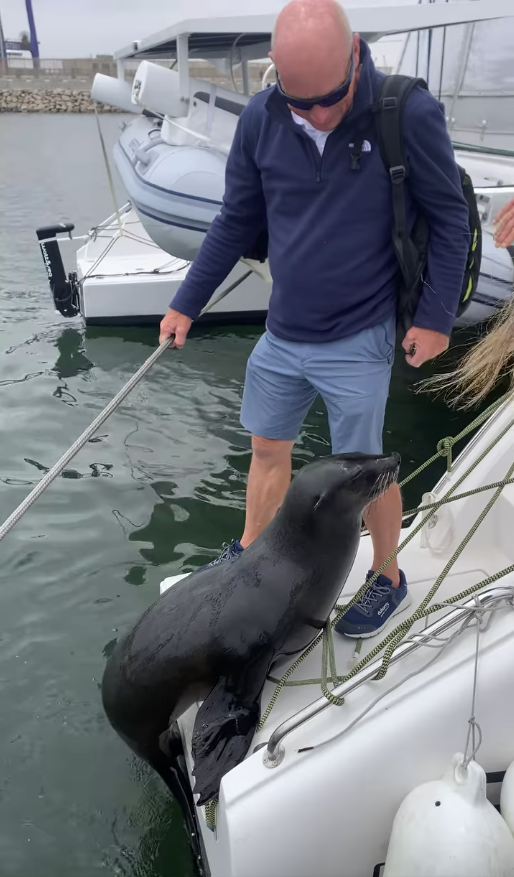

The Goldings traveled to Walvis Bay hoping to see African Penguins, an iconic species of South Africa and Namibia. While they spotted a small colony at Boulders Beach in Simonstown, their search in Walvis Bay yielded none. Locals reported only one or two lone sightings in the past year. Alarmingly, the African Penguin population has declined by 97% over the past decade due to overfishing of sardines and anchovies by commercial fleets, as well as noise pollution from shipping and harbor development.
During their stay, the Goldings befriended Peter Davidson, former commodore of the Walvis Bay Yacht Club, who welcomed them into his family, helped plan their road trip, and arranged a club presentation. The yacht club hosted an evening for members and youth sailors, where Mike shared insights on his sailing career, their DISCOVERY Yacht expedition, and their partnership with SeaKeepers to raise awareness of ocean conservation.
The Goldings later connected Peter with the Ocean Sailing Association of Southern Africa (OSASA), making him an official OSASA representative for Walvis Bay Yacht Club. He will now play a key role in welcoming visiting yachties and assisting with nautical matters. As they departed, Peter and Ettienne bid them a warm farewell, waving them off from the shore.
From left to right: Ettienne Labuschagne - Member of Walvis Bay Yacht Club, Lily Burnet (DY Traverse crew), Dee Richards (DY Traverse crew), Mike and Andrea Golding, Peter Davidson – former Commodore of Walvis Bay Yacht Club
The Goldings and their crew arrived at the mid-Atlantic island of St. Helena on March 19th. They explored the island’s diverse landscapes, from volcanic jungles to lush green pastures, while immersing themselves in its rich history and wildlife. Highlights of their visit included swimming with a whale shark and encountering a variety of marine species during a dive.
After departing St. Helena for Ascension, the Goldings enjoyed favorable winds, but the wind and swell initially made going ashore challenging. This gave them time to carry out minor vessel repairs and check in on their SeaKeepers Burgee.
The waters around the Goldings’ route have a reputation for shark activity, particularly from Galapagos sharks once drawn to spearfishers chumming the water. While they didn’t spot any, they were quickly swarmed by aggressive Triggerfish, which will bite almost anything (including a GoPro) making swimming near Traverse impossible. Instead, they enjoyed turtle spotting along the nearby coast.
Eventually, they made it ashore on the 6x6-mile island, the exposed peak of a vast underwater volcano. A local teacher shared that just the night before, 83 turtles had climbed the steep beach to lay eggs, while thousands of hatchlings made their way to the sea. Exploring the island, they visited turtle nesting sites before hiking to the summit of Green Mountain and Dew Pond. This man-made rainforest, an experiment initiated by Darwin and Joseph Hooker, was created by planting diverse vegetation to capture humidity. Towering bamboo now extracts moisture from the air, filling the pond, which once provided fresh water for stationed troops. However, introduced species have displaced native plants, though efforts are underway to restore them.After their time on Ascension, the Goldings have set sail for Brazil.



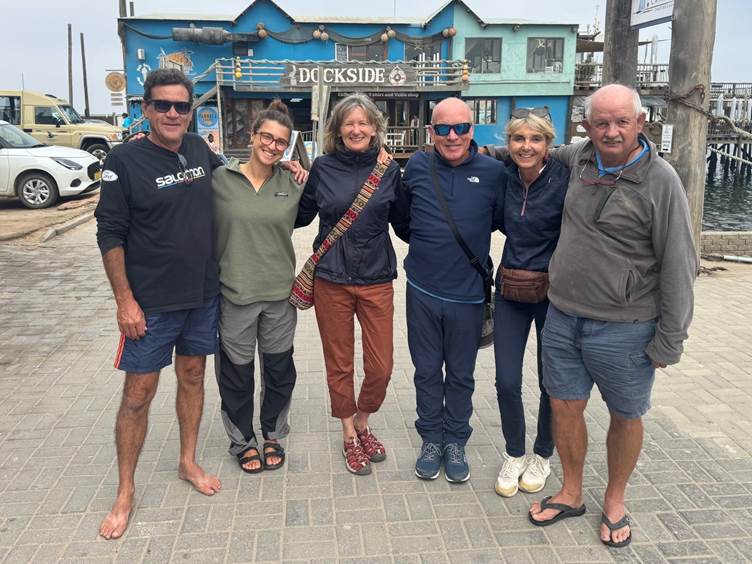

You must be logged in to post a comment.